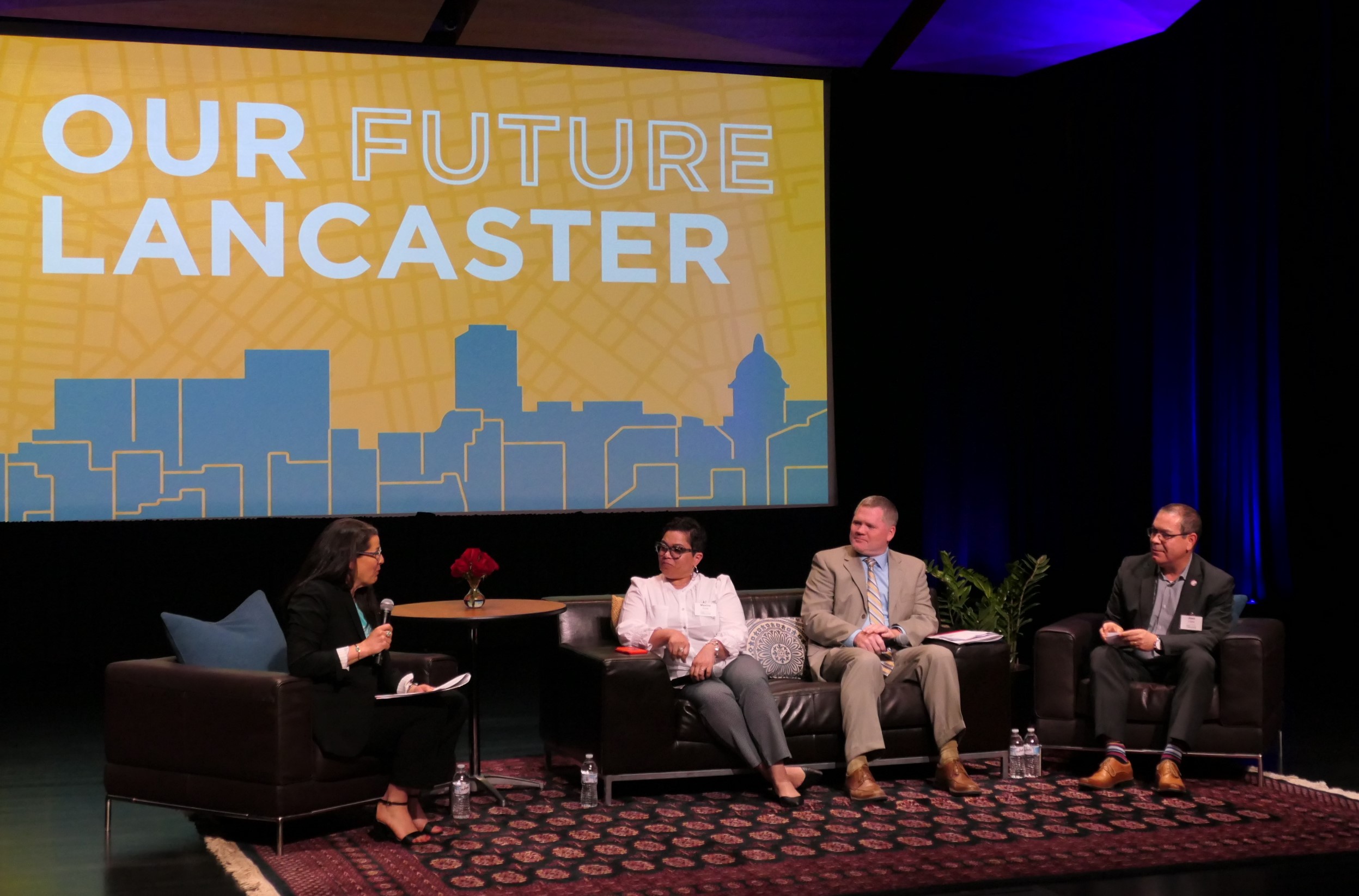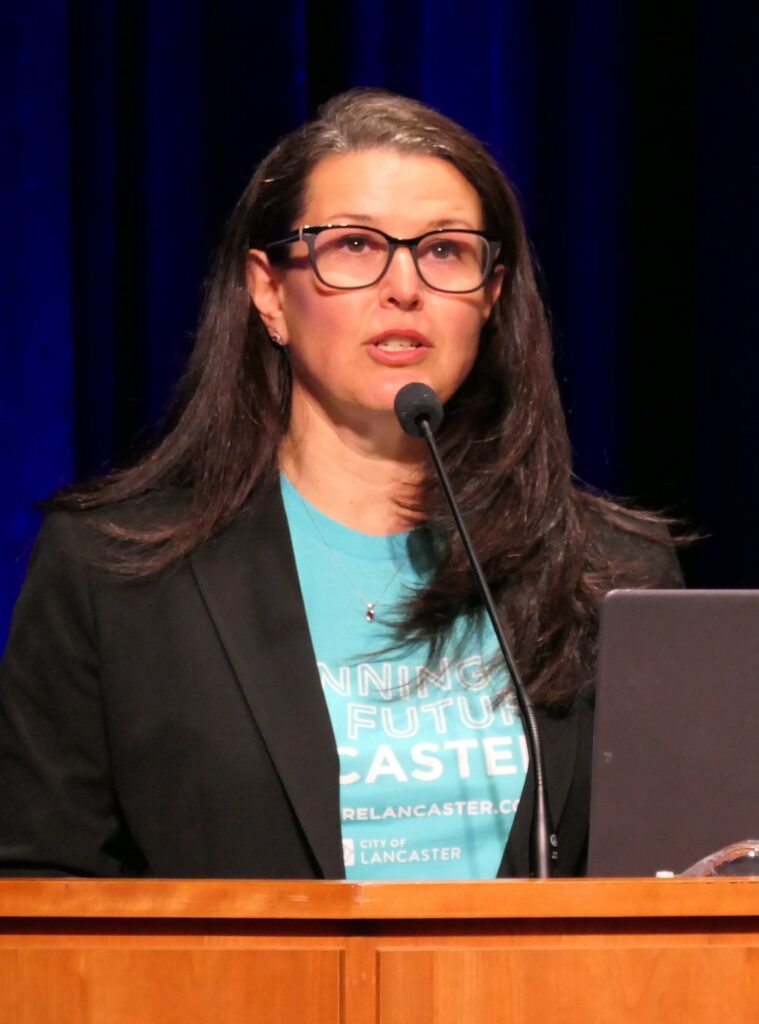
“Wow,” Mayor Danene Sorace said Wednesday evening as she surveyed the the nearly full auditorium at the Ware Center.
“There’s over 300 people that decided to come out on a Wednesday night to learn about a comprehensive plan,” she said, laughing. “That’s amazing!”
The comprehensive plan, the first since 1993, has been more than two years in the making. City officials emphasize that residents have had unprecedented input, with more than 5,000 people making comments at meetings, public events and through surveys.
- Sidebar: Poets provide call to action
Those were combined with demographic and economic analysis, internal assessments and other data. Wednesday saw the release of a set of draft polices and maps, launching the last phase of the planning process, which leads to expected adoption of the plan at the end of October.
Emerging trends
These are seven key trends that factored into the development of Lancaster’s draft comprehensive plan, according to Community Planning & Economic Development Director Chris Delfs:
- Current and future city and county population increases
- The rising cost of housing
- A shift toward smaller households and fewer households with children
- New work patterns driven by information technology, which are shifting job types and the demand for office space
- Climate change
- New transportation options such as rideshares and electric vehicles
- The growing emphasis on equity.
Equity is arguably the most important of the seven, Delfs said, and has been “threaded” throughout the plan.
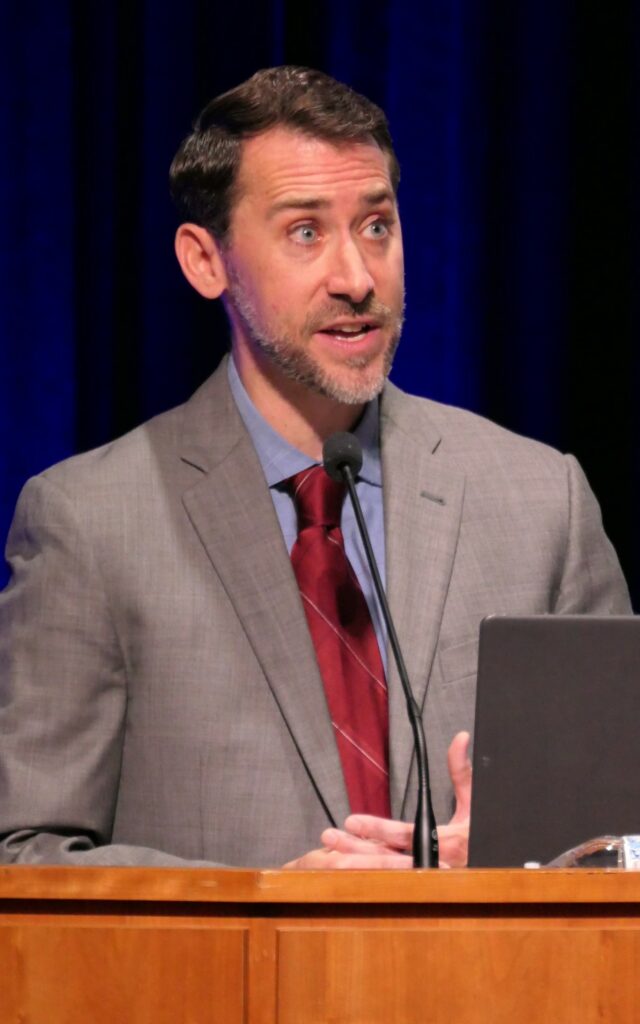
The plan is centered around five main goals, Community Planning & Economic Development Director Chris Delfs said: Strengthening neighborhoods, expanding economic opportunity, connecting people and places, growing greener and building community and capacity.
Those goals can each be advanced through land use policy, Chief Planner Douglas Smith said: “The heart of a comprehensive plan really is about land use.”
Related: Comprehensive plan calls for revitalizing Conestoga River corridor
Broadly, the plan calls for expanding the city’s housing stock and fostering entrepreneurship. It envisions a more walkable and bikeable city with more neighborhood stores. It envisions more storefronts along corridors such as Manor Street in the southwest and Duke Street in the southeast.
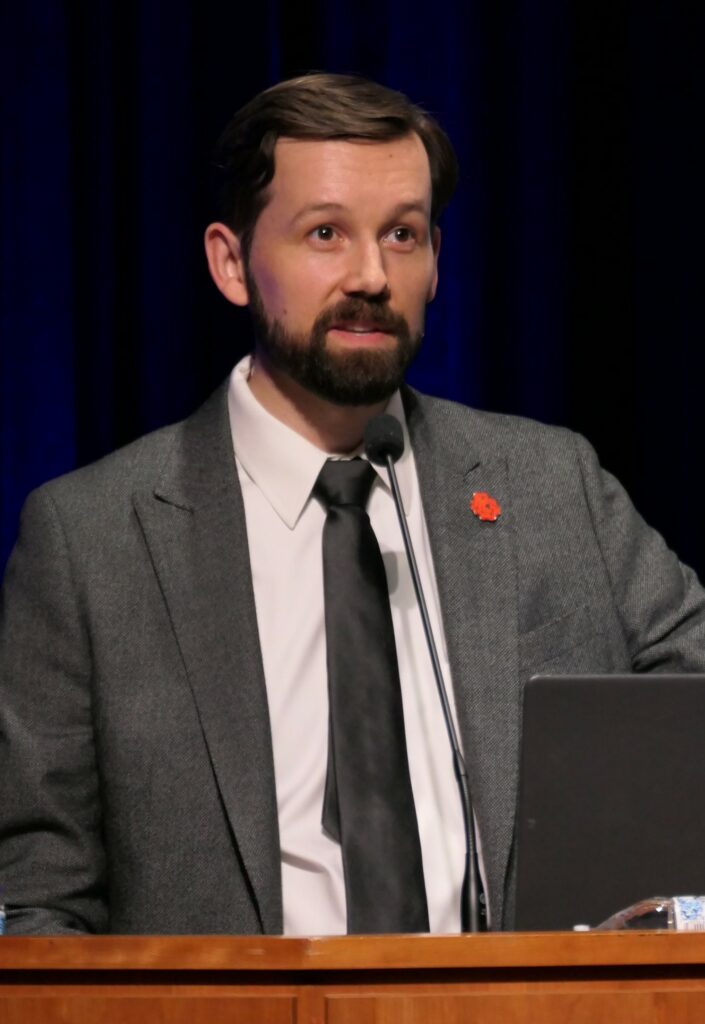
The city heard overwhelmingly from residents that neighborhoods dotted with small businesses are “highly desirable,” Smith said.
The plan embraces the goal of transforming the area around the Amtrak Station into a dense, mixed-use urban area, a goal shared with the Lancaster County Planning Department. It envisions rezoning the train station’s immediate surroundings to create a single contiguous “urban center” between the station and the area around Penn Square.
The draft includes a “Conestoga Riverfront Vision” that would transform the river corridor into an environmental conservation area and recreational destination. It anticipates the potential evolution of Park City Center into a mixed-use site that incorporates housing — denoted on the land map by hatching that denotes both “urban center” and “neighborhood mixed-use.”
Once the County Prison moves to Lancaster Township, the plan calls for redeveloping the former prison site to complement the adjacent Reservoir Park, including “neighborhood-serving commercial uses” such as a market.
In all, the plan designates just seven land uses, versus 16 districts and one overlay in the city’s current zoning map. Simplifying zoning is definitely a goal, Smith said, but the exact details of what that would look like remain to be worked out.
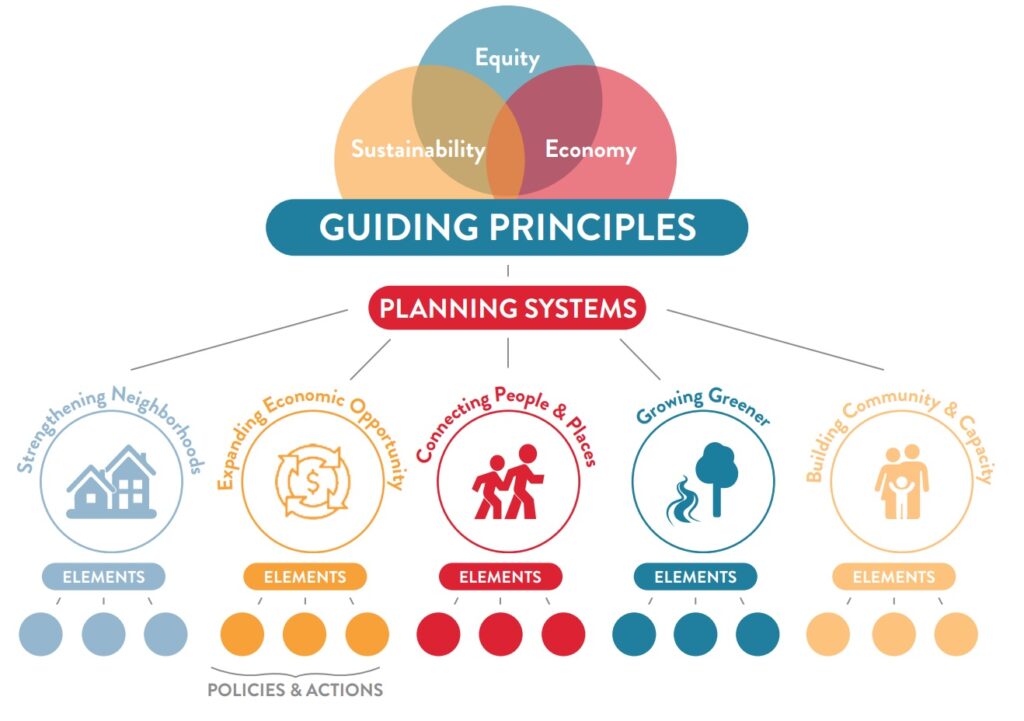
Derrick Burch, a lifelong city resident and community advocate, said he liked what he heard at the presentation. The previous comprehensive plan, he said, gave short shrift to the southeast, but “this time, they didn’t leave us out.” Now the city needs to follow through, he said.
For more information
To learn more about Lancaster’s comprehensive plan and download the draft plan document, visit OurFutureLancaster.com. A video of Wednesday’s presentation is available here.
“I loved it,” said Willonda McCloud, CEO of Bright Side Opportunities Center. A challenge, she said, will be making sure everyone is on the same page as the plan is implemented, including those who serve on the many authorities, boards and commissions involved in planning and development.
Following Delfs’ and Smith’s presentations, Sorace brought three individuals on stage for a “community conversation”: Spanish American Civic Association President Jose Lopez; Will Clark, director of land use and transportation at the Lancaster County Planning Department; and Maxine Cook, a member of the city Planning Commission and the comprehensive plan committee.
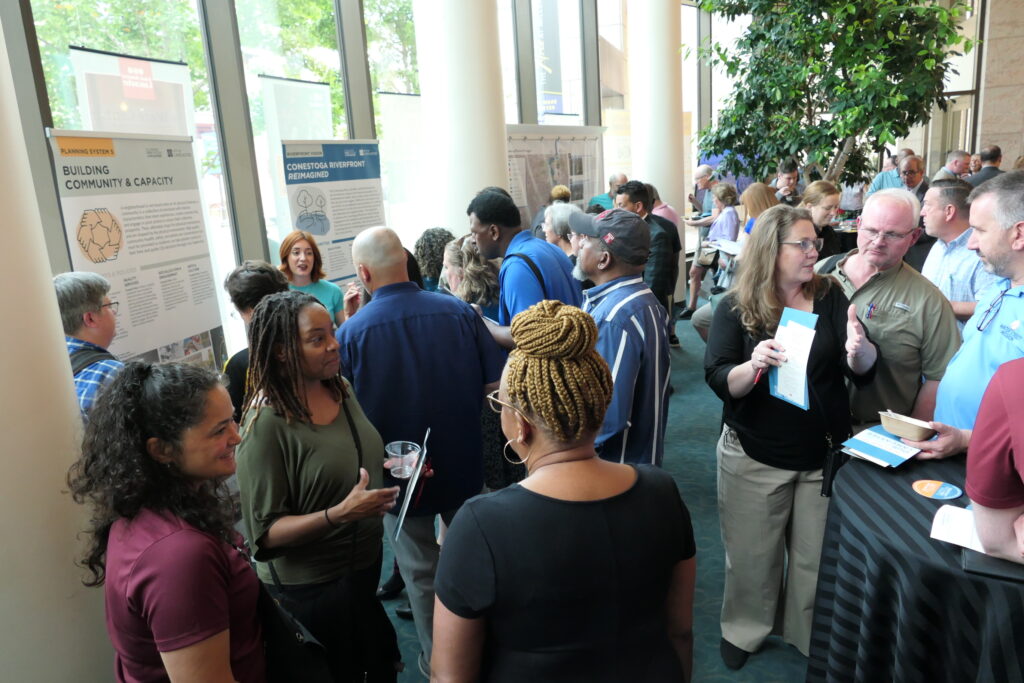
Lopez, who noted that he was on the Planning Commission during the development of the 1993 comprehensive plan, underlined the critical importance of providing affordable housing for low- and moderate-income households.
Clark pointed out that many of the areas the plan prioritizes for revitalization, such as the Amtrak station, are either along the city’s edge or extend into other municipalities. The city will need to continue communicating with other stakeholders to overcome those coordination and collaboration challenges, he said.
Cook said she’s lived in all four quadrants, and that the lack felt in the Southwest compared to the other three are palpable. Sorace concurred, acknowledging that previous plans and revitalization efforts have done harm and that “we’re still working on that.”
Overall, Cook said, everything in the plan seems targeted toward addressing real needs. If it can be not only adopted, but implemented, “I think it would transform our communities,” she said.
‘And rise we will together’: Poets provide call to action

Two of Lancaster’s most prominent emerging voices bookended Wednesday’s comprehensive plan presentation with spoken-word pieces expressing hope and idealism and reminding those with power to heed the needs of marginalized communities.
“It’s up to us now to shape our city’s fate,” Sir Dominique Jordan said in “Let the Rose Rise.”
Calling out past policies that caused “generational pain and strife,” he name-checked fighters for justice such as Thaddeus Stevens and Lydia Hamilton Smith.” Evoking a church service, he led a call-and-response: “Let the rose rise,” he proclaimed, with the audience providing the refrain, “And rise we will together.”
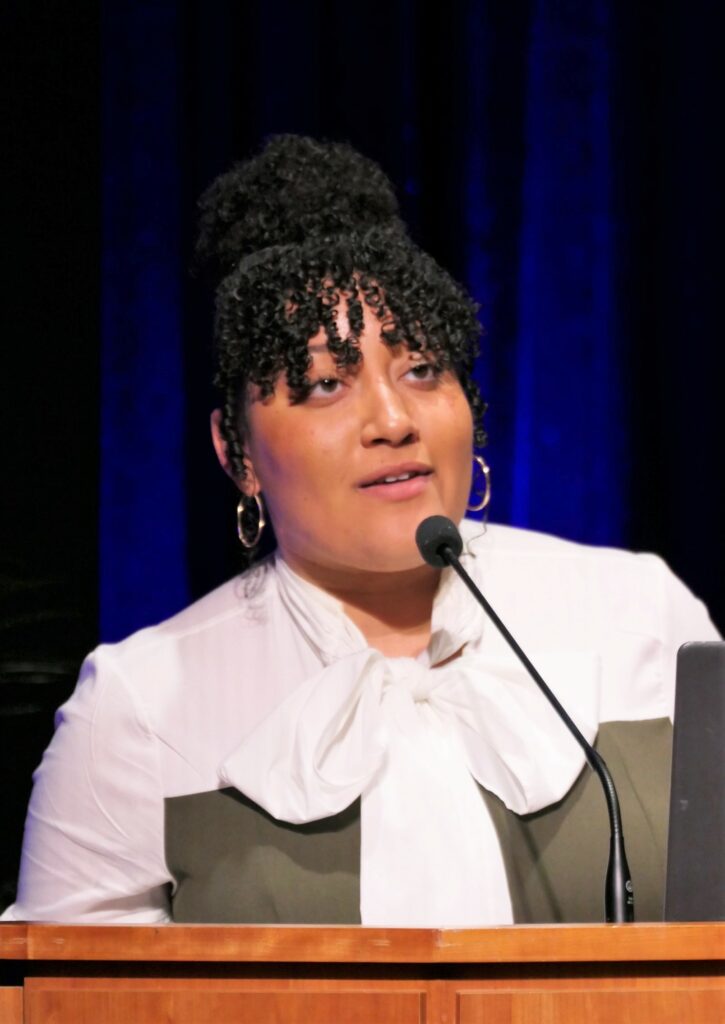
He called on them to advocate “for a city we can all be proud to embrace / A place for everyone, with love and grace.”
Colon, Lancaster’s first poet laureate, likewise recalled the sins of the past in her poem, “Our Future Lancaster.”
“Acknowledge inclusivity requires accountability / Our rise requires responsibility,” she said, before pivoting to a call for unity:
From Cunningham’s to Watt & Shand
We are more than just a brand
Our future takes the collective g arden of voices and experiences
Honors the culture of ALL of its people and E X P A N D S
What our community will grow to be is now in your hands.
